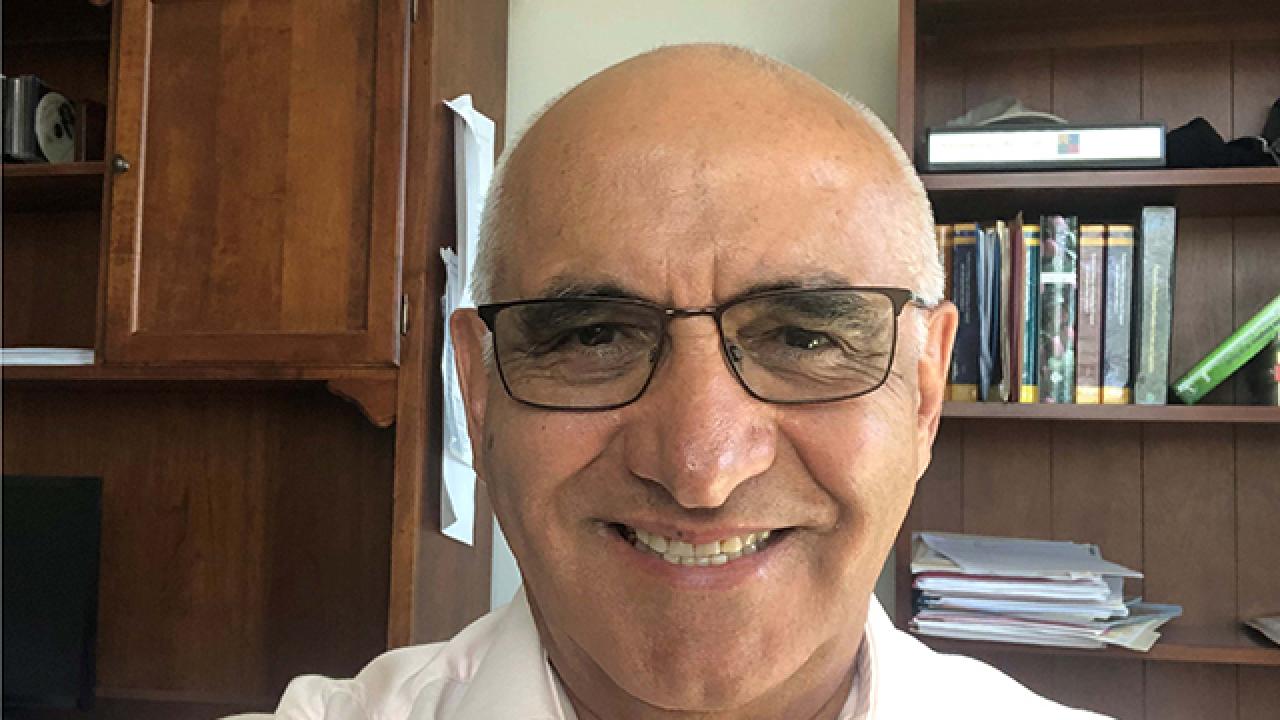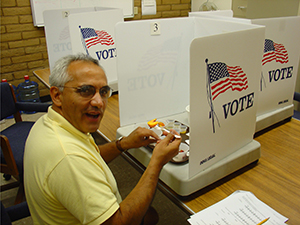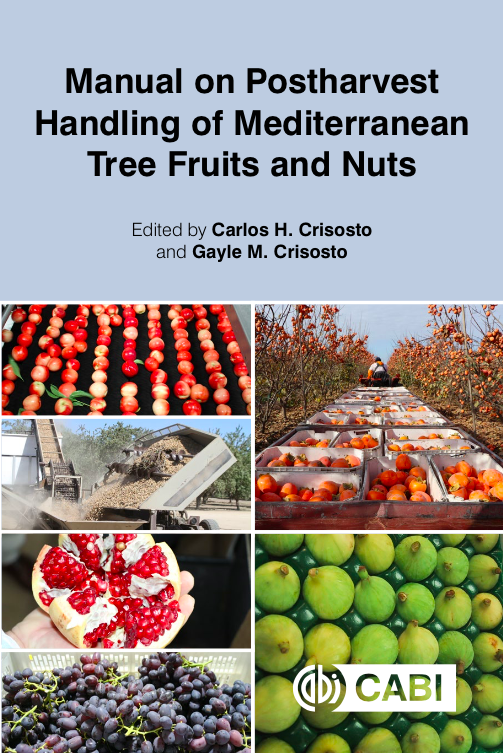
Carlos Crisosto receives Distinguished Service Award, releases book
If you have bitten into a ripe, store-bought peach or nectarine, you may have UC Cooperative Extension postharvest physiologist specialist Carlos Crisosto to thank.
First joining the University of California, Davis in September 1990 to study the postharvest physiology of stone fruits, like nectarines, peaches, and plums, Crisosto’s research program seeks to understand the processes behind fruit flavor and components of postharvest life, like texture and decay. He then applies his research to develop protocols and quality indexes to ensure consistently good-tasting fruits that are easy to store. His work has been broadly implemented by shippers and retailers across the world.
This year, Crisosto received recognition for his decades-long research program and released a book, alongside his wife Gayle Crisosto, a retired specialist in the Department of Plant Sciences, that is positioned to be the foundational text on the postharvest handling of Mediterranean fruit and nut trees.
Fruitful Service
On July 7, Crisosto received the UCCE 2019/2020 Outstanding Research Distinguished Service Award from UC Agricultural and Natural Resources. The award honors UCCE scholars whose research has made a significant impact in their field over a long period of time; For Crisosto, he was specifically recognized for his efforts in expanding agricultural markets, reducing food waste, improving fruit consumer quality and safety, and his contributions to education and outreach in both English and Spanish.
“This award is a special one,” said Crisosto over Zoom on a sunny November afternoon, “because it’s not just Davis – it’s Berkeley, Riverside, Irvine, Merced, and all of the UCCE. Receiving it says, ‘Yes, you have been doing fantastic work with huge impacts on your industry.” Now, he was beginning to smile. “For me, that’s better than any promotion.”
A benchmark of Crisosto’s career is his innovative approach of incorporating consumer perceptions into solutions for industry problems. Frequently cited by colleagues to illustrate this point is his “Save the Stone Fruit” campaign.

In the mid-’90s, Crisosto realized stone fruit stored at a temperature between 2º-10º C – the standard temperature at the time to store fruit – would end up mealy and unpleasant once it got into the hands of the consumer. Because of this practice, which he dubbed the “The Dead Zone,” sales and consumer perceptions of stone fruit were low. To solve this issue, Crisosto looked at the issue from the consumer’s point of view: if you cannot trust that the fruit will taste good, why would you buy it? Consistency was the issue.
The solution was simple: store the produce at a warmer temperature to ensure good texture and a desirable ripeness. To assuage fear that warmer temperatures would lead to premature ripening and greater investments losses, he designed the peach handling protocol while at the California Tree Fruit Agreement to demonstrate the safety and benefits of the process. Within three years, his protocol became the standard with a 73% adoption by all retail and wholesale receivers in North America.
“Shippers were able to command an up-charge for enhanced quality, retailers enjoyed increased sales, and consumers bought more fruit with confidence,” wrote David Parker, former Director of marketing at the California Tree Fruit Agreement. “The results of his research demonstrated how excellent science, applied with innovation, can transform everyday experience.”
Crisosto has also contributed greatly to education and outreach. As an extension specialist, he wrote 774 limited-distribution articles on 22 different commodities in cooperation with peers. At the UC Kearney Agricultural Research and Extension Center, he not only helped develop the world-class F. Gordon Mitchell Postharvest Center laboratory, but was instrumental in establishing the center’s state-wide research and extension programs. Through the University of California Cooperative Extension, he has taught courses at UC Davis and has coordinated yearly seminars and field tours at the campus’ Postharvest Technology Center and the Fruit and Nut Research and Information Center. He is currently working on creating a digital educational program to train beginning farmers.
“Crisosto has been extremely successful domestically and globally,” wrote Curt Granger, produce-specialty crop consultant and former Ca Kiwifruit Commission manager who recommended Crisosto for the award, “because growers and fellow researchers know the integrity of his work and the intensity, humility, and passion he places on the research he undertakes.”
The prestigious UCCE 2019/2020 Outstanding Research Distinguished Service Award is complemented by the 2020 Industry Distinguished Service & Achievement Award from the California Fig Institute, the Fruit Flavor Innovation Research Award from Save Mart in 2013, and the Carroll R. Miller Award from the National Peach Council in 2004.
A New Leaf

Published by CAB International on October 28, Manual on Postharvest Handling of Mediterranean Tree Fruits and Nuts is edited by Crisosto and his wife Gayle Crisosto, who retired as a postharvest specialist in the Crisosto lab in July 2020. While Crisosto, who himself retired as the director of the Fruit and Nut Research and Information Center last year, has authored or co-authored 47 book chapters, this is his first book to be published as both a co-editor and co-author.
“Some of these Mediterranean tree fruits are relative (sic) minor crops in California with limited support, but are very important in other countries, which dedicate intensive economic resources to solving their postharvest problems,” wrote Crisosto in the preface.
However, the information that is needed to solve these postharvest problems can be very difficult to access. That’s what compelled him to take on this book project, which is aimed at the global fruit industry with the purpose of facilitating solutions to modern issues.
The seven chapters cover a variety of Mediterranean fruits and nuts, like almonds, persimmons, and table grapes, and are co-written by Crisosto and UC specialists or international peers asked to share their expertise.
In addition to these Mediteranenan postharvest products having economic importance, Crisosto notes that these fruits and nuts provide nutritious food to communities all over the world and have been connected with longer and healthier lives.
To find out more about Manual on Postharvest Handling of Mediterranean Tree Fruits and Nuts, please click here.
Congratulations to Carlos Crisosto for receiving the UCCE 2019/2020 Outstanding Research Distinguished Service Award and to him and Gayle Crisosto for the publication of Manual on Postharvest Handling of Mediterranean Tree Fruits and Nuts; you have demonstrated the transformative work that is possible through UC ANR and the Department of Plant Sciences’ land grant mission.
